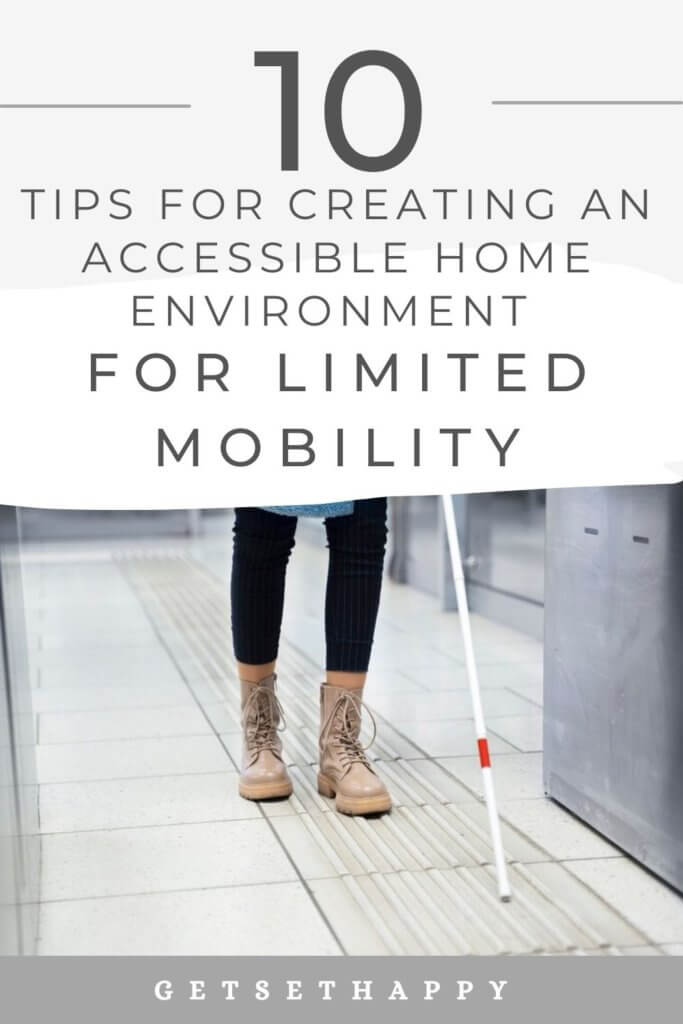Living with limited mobility is challenging! This impacts one’s ability to move around and engage in daily activities. Unfortunately, physical limitations not only affects one’s mobility but it also impacts their mental state. Creating an accessible home environment is crucial for promoting independence, safety, and overall well-being. Let’s delve into some valuable tips for making your home more accommodating for individuals with limited mobility while emphasizing the importance of mobility aids in achieving this goal.
1. Understand the Role of Mobility Aids:
Mobility aids, such as wheelchairs, walkers, canes, and crutches, play a pivotal role in assisting individuals with limited mobility to navigate their surroundings. They provide stability, support, and enhanced mobility. Understanding the different types of mobility aids and their functions is essential for tailoring your home modifications accordingly.
2. Clear Pathways and Hallways:
Creating clear and wide pathways throughout your home is essential for accommodating mobility aids. Remove clutter, rugs with potential tripping hazards, and furniture that obstructs movement. A smooth and unobstructed pathway ensures safe and effortless navigation.

3. Ramps and Elevators:
Stairs can be a significant barrier for individuals with limited mobility. Installing ramps at entrances eliminates the need for stairs and facilitates wheelchair access. In multi-story homes, consider adding a residential elevator or stairlift to ensure easy access to all levels of your home.
4. Accessible Bathrooms:
Bathrooms are common areas where accessibility is crucial. Install grab bars near toilets and in showers or tubs to provide added stability and support. Consider a roll-in shower with a built-in bench and a handheld showerhead, making bathing more comfortable and safer for individuals with mobility challenges.
You may also like to read: 7 Bathroom Safety Tips to Prevent Injuries
5. Kitchen Adaptations:
The kitchen is the heart of the home, and adapting it for accessibility is paramount. Lower countertops to wheelchair height or provide spaces for seated preparation. Install pull-out shelves and drawers for easy access to items without the need for excessive reaching or bending. This ensures that cooking and meal preparation remain enjoyable and inclusive activities.
6. Bedroom Comfort:
The bedroom should be a sanctuary of comfort and accessibility. Position the bed at an appropriate height for easy transfers from a mobility aid. Ensure there’s ample space to maneuver around the bed. Utilize adaptive bedding tools to facilitate independent bed-related tasks, enhancing both comfort and convenience.
7. Lever Door Handles and Faucets:
Small changes can make a big difference in enhancing accessibility. Replace traditional doorknobs with lever handles and standard faucets with lever or touch-sensitive options. These modifications are particularly beneficial for individuals with limited dexterity, as they require less effort to operate, promoting independence.
8. Smart Home Technology:
Embracing smart home technology can significantly improve accessibility. Control lighting, thermostats, and other devices remotely, reducing the need for manual adjustments. Voice-activated assistants can be incredibly helpful, enabling individuals to interact with their environment without the need to physically interact with switches or controls.

9. Flooring and Surfaces:
Flooring choices play a critical role in preventing accidents. Opt for non-slip flooring materials to reduce the risk of falls. Carpets should be low-pile and securely attached to the floor. Ensure that thresholds between rooms are level to avoid tripping hazards, creating a safer living environment.
10. Personalize Accessibility:
Recognize that every individual’s mobility needs are unique. It’s beneficial to work closely with an occupational therapist or accessibility expert to tailor your home modifications to your specific requirements. They can provide invaluable insights, recommendations, and personalized solutions that address your mobility challenges effectively.
Wrapping Up on Creating an Accessible Home Environment
Creating an accessible home environment for individuals with limited mobility is a multifaceted endeavor that requires careful consideration of mobility aids and thoughtful home modifications. By implementing the ten tips outlined above, you can enhance safety, independence, and the overall quality of life for yourself or your loved ones. It’s essential to remember that accessibility is an ongoing process, and periodic reassessment of your home’s layout and features is crucial to ensure it continues to meet changing needs. Ultimately, an accessible home fosters a sense of empowerment, allowing individuals with limited mobility to thrive within their living spaces.
Featured Image: Image by artursafronovvvv on Freepik




4 Comments
Lydiah
August 16, 2023 at 7:31 pmSo interesting in creating an accessible homestead
Jimmy Clare| CrazyFitnessGuy
August 16, 2023 at 9:21 pmvery good tips thanks for sharing
Susan JoyAmongChaos
August 16, 2023 at 10:29 pmI work with people who need adaptive aids and minor home modifications in order to maintain a safe and accessible standard of life. These small things can make a tremendous difference in quality of life for a person with physical challenges.
Literally Laurie
August 17, 2023 at 5:00 pmThis is a very helpful post outlining the steps involved to make a home accessible for the mobile challenged! Great job.